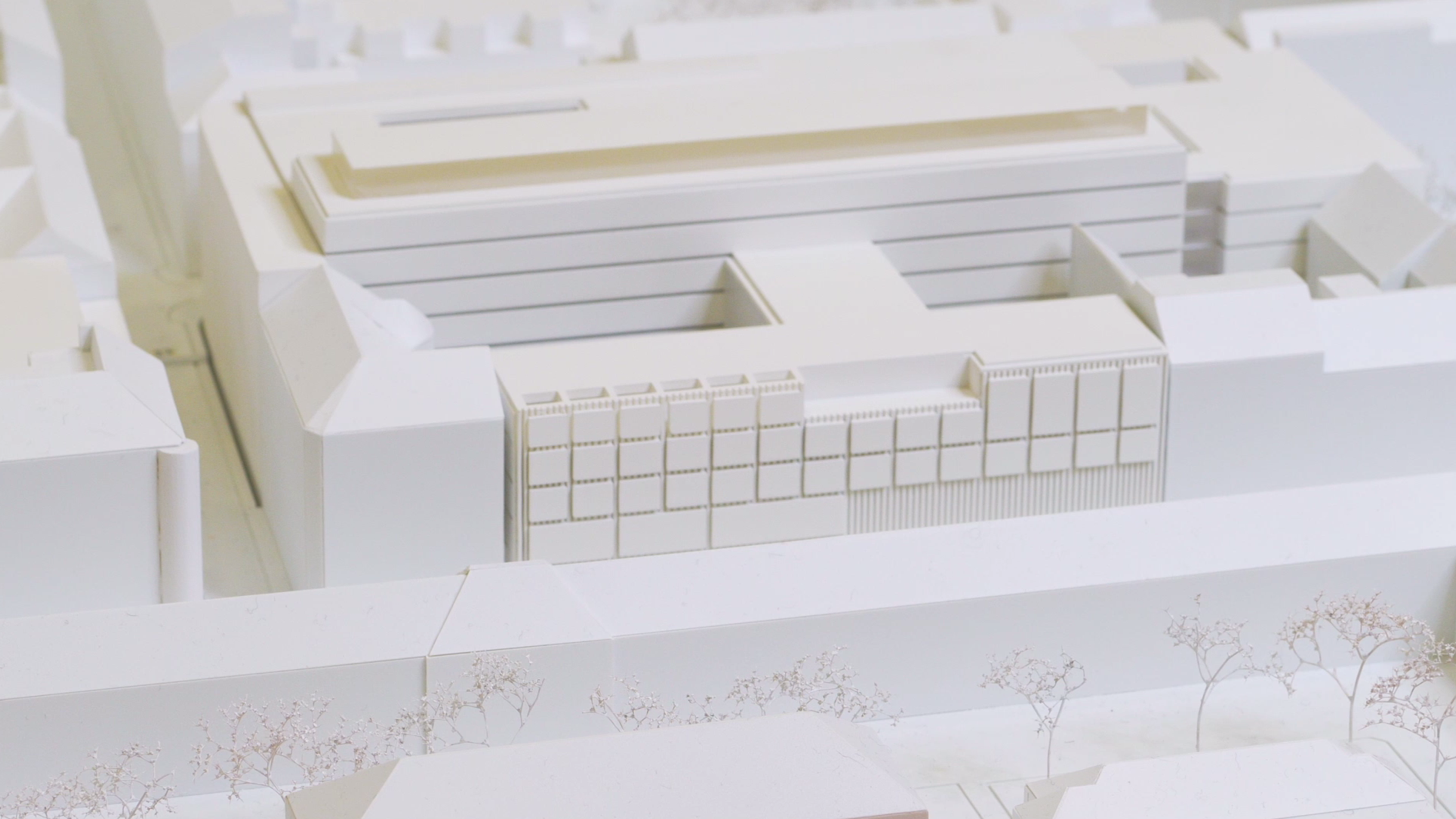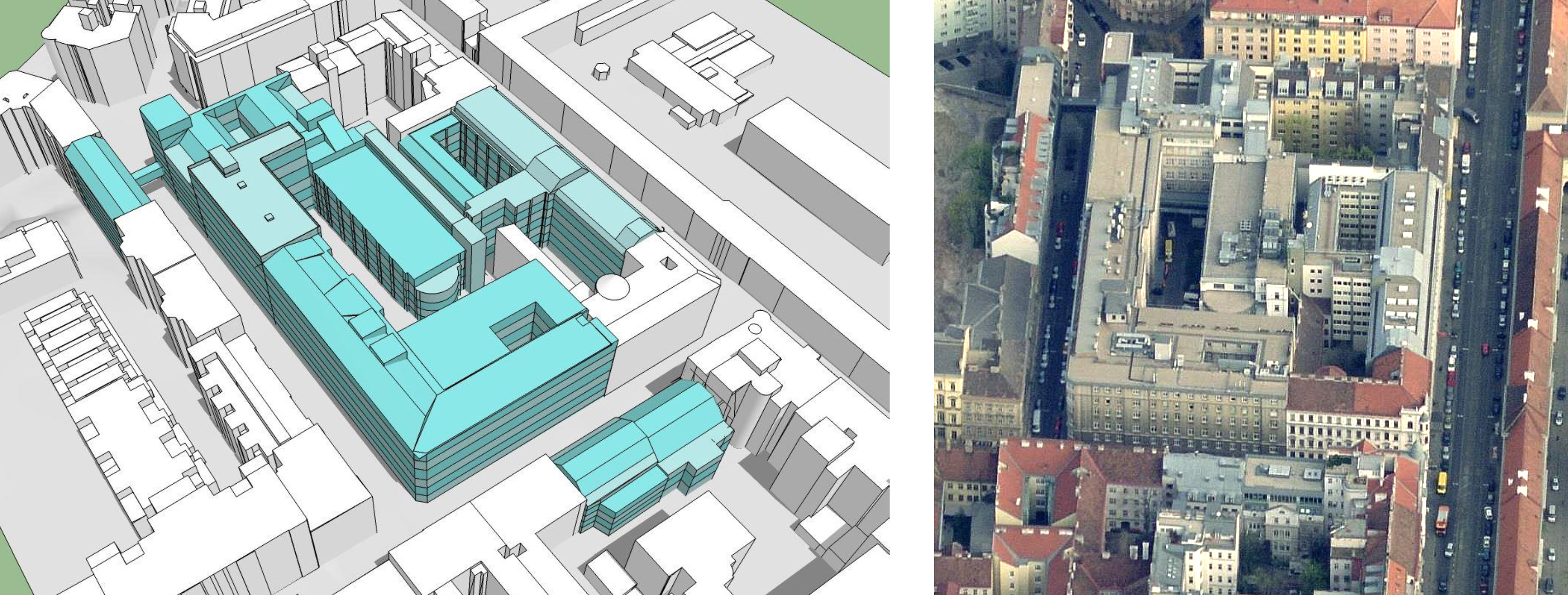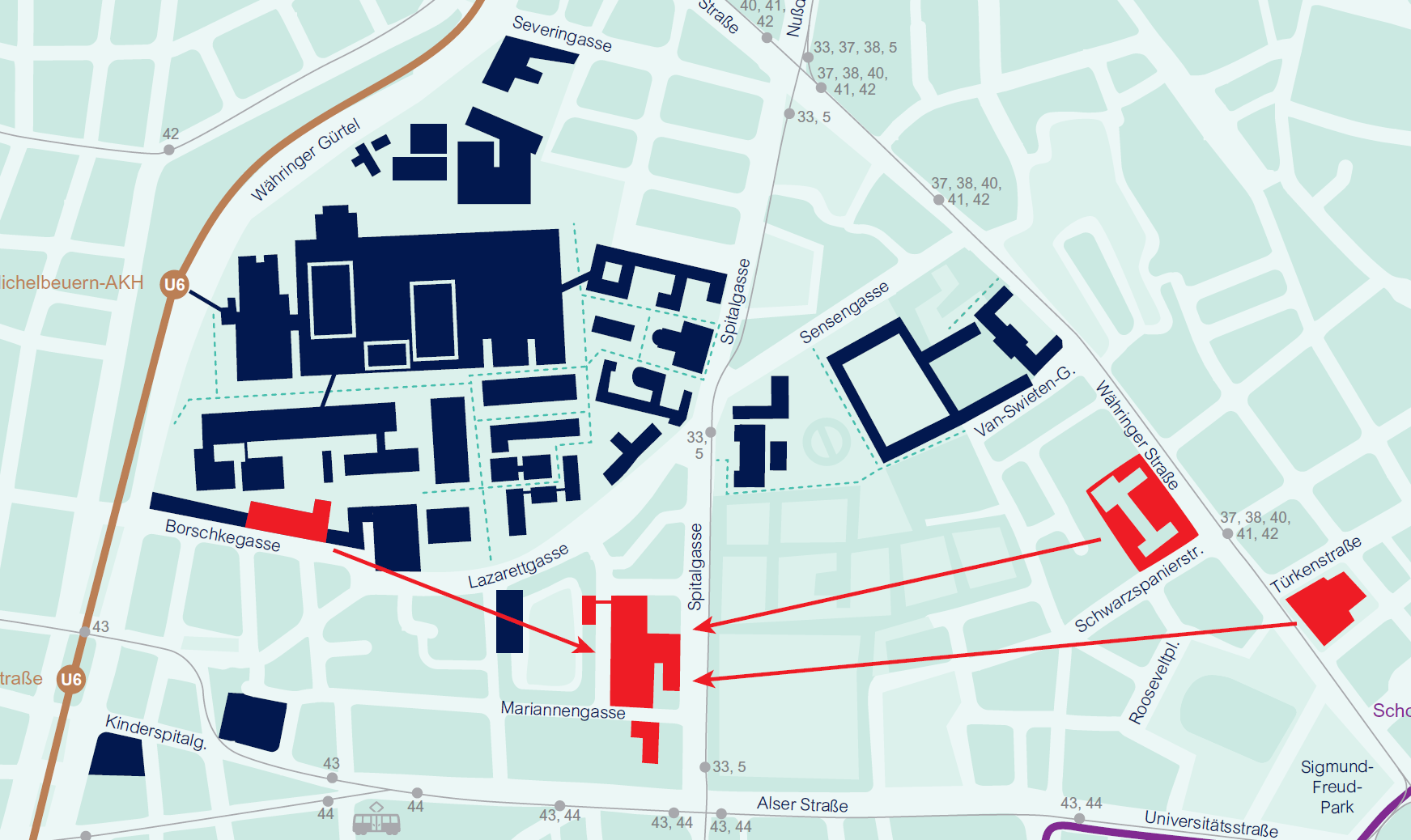Preclinical facilities, which were previously spread over approximately 35,000 m² (usable area) are being brought together. A total of 744 scientists from the Centers for Physiology and Pharmacology, Anatomy and Cell Biology, Pathobiochemistry and Genetics, Medical Physics and Biomedical Engineering and the Institute of Cancer Research will move from their current workplaces onto the new campus. Aproximately 2,000 students will study here in the future.
Not only will this solve the current space problem but will also provide them with a state-of-the-art working environment: with teaching rooms and skills lab for students and centralised research infrastructure. The latter will also include the very latest equipment, for example for mass spectrometry (method for measuring the mass of atoms and molecules), DNA cytometry (method for early diagnosis of malignant tumours by measuring the amount of hereditary material in their cells) and scanning electron microscopy. The start of operations is planned for the winter semester of 2027/2028.
![[Translate to English:] Volkan Talazoglu [Translate to English:] Volkan Talazoglu](/fileadmin/_processed_/4/f/csm_Volkan_Talazoglu_MedUni_Wien-Matern_8244_483b2d50ef.jpg)
“We are building in the city centre, partially with pre-existing listed buildings, so we have to perform a balancing act between preserving historic buildings and creating the necessary conditions for a modern laboratory building.”
The following institutes will move into Mariannengasse Campus
While physiology looks at the functions of living organisms or parts thereof, pharmacology is dedicated to identifying interactions between living organisms and substances that influence normal or abnormal functions. The work at the Center for Physiology and Pharmacology is therefore dedicated to researching and teaching about normal and disrupted functions in healthy or sick organisms and the interactions of the same with molecules, be these medicines or toxins.
Research work is primarily focused on the cardiovascular area, as well as the nervous and sensory systems. Research work ranges from the investigation of molecular structures to the clarification of complex behavioural patterns.
The Center is currently located at Schwarzspanierstraße 17 and comprises the following divisions:
- Institute of Vascular Biology and Thrombosis Research
- Institute of Pharmacology
- Institute of Physiology
- Division of Neurophysiology and Neuropharmacology
The Center for Anatomy and Cell Biology (Währinger Straße 13) is dedicated to cutting-edge research and teaching in the disciplines:
- Anatomy
- Developmental biology
- Tissue biology
- Cell biology
Major research topics are combined in some areas such as e.g. functional gross morphology, image processing, developmental, tissue and cell biology but also epigenetics and RNA biology, as well as genetics and rare diseases. Human material and suitable model systems are used to describe normal and abnormal mechanisms during development and during the adaptation of tissues and organs on a sub-cellular, cellular and organic level and thereby gain a better understanding of them.
The teaching staff at the Center train the next generation of doctors and researchers to successfully prepare them for the challenges of modern and research-oriented medicine.
The Center for Pathobiochemistry and Genetics, consisting of the Institute of Medical Genetics and the Institute of Medical Chemistry and Pathobiochemistry and currently housed at Währinger Straße 10, provides education, research and patient care in the field of human genetics and medical chemistry. Genetics plays a key role in modern medicine for identifying the molecular causes of human diseases and for the resulting new approaches to diagnosis and treatment. The staff teach the next generations of doctors the various sections of the curriculum as well as genetic principles and their clinical applications. They supervise dissertations and doctoral theses and offer full postgraduate training to qualify as a consultant in medical genetics.
The Institute’s research interests include the characterisation of molecular causes of certain mono-genetic diseases, stem cell research, hereditary cancers, reproductive genetics, signal transduction cascades and genetic diseases, the development of new therapeutic approaches for human genetic diseases, bioethics and genetic eco-toxicology.
There are thousands of different genetic diseases. Both in the field of genetic counselling and genetic diagnostics, the reference centre services a catchment area of affected families that goes far beyond the borders of Austria. Using the very latest genome sequencing techniques, it opens doors for patients in terms of prognosis, prophylaxis and treatment.
Following the spinoff of the Medical Faculty of the University of Vienna in 2004, the Institute of Medical Physics and the Institute of Biomedical Engineering & Physics were assigned to the newly founded Medical University of Vienna and consolidated to become the Center for Medical Physics and Biomedical Engineering.
The Center consists of three axes: research with the respective specialist working groups, internal services for structural maintenance and technical support and teaching with emphasis on PhD programmes and postgraduate education. This includes a PhD in Biomedical Engineering (N790) and a PhD in Medical Physics (N094). The “Medical Physics” degree course is directed at physicists who want to pursue a career as medical physicists in a clinical environment. The Center has a series of technical facilities to support the scientific work at the university. It is currently located within Vienna General Hospital (Währinger Gürtel 18-20).
The Center of Cancer Research of the Medical University of Vienna is member of the Comprehensive Cancer Center and its current address is Borschkegasse 8a. Alongside basic cancer research, translational cancer research is a top priority; it offers comprehensive education and advanced training to both graduate and postgraduate level.
In terms of research, the Center focuses on four main areas: cellular and molecular tumour biology; applied and experimental oncology; safety of chemical substances and cancer prevention and progression and metastasis of tumours. The Center’s mission statement is to work closely with the clinical departments to introduce basic and interdisciplinary biomedical research findings into the development of improved and personalised concepts, in the spirit of “from laboratory to patient and vice versa”. The long-term objective is to fight cancer by improving prevention, diagnosis, prognosis and recovery.


